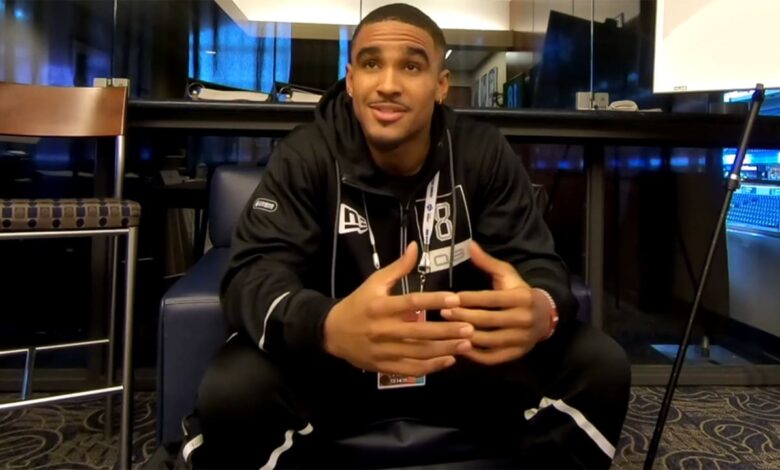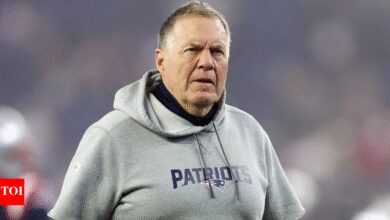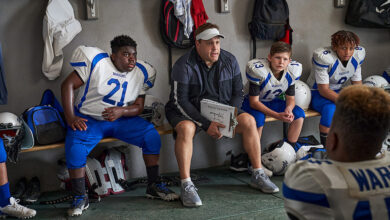Inside the making of an NFL Combine interview

Eagles Director Player of Personnel Charles Walls is here for his second Combine with the Eagles (and 12th overall in the NFL). Conversely, he has seen how other franchises have gone about it in Green Bay (where he worked under two different GMs) and in Cleveland, before coming to the City of Brotherly Love.
“Every organization I’ve been with has a bit of a different mindset,” Walls explained. “There may be a different format, a different structure in order to gather the information you want to get out of that interview.”
In Philadelphia, collaboration has always been key. That togetherness shows up in this atmosphere.
Walls explained further that it is truly an all-hands-on-deck approach from both the scouting and coaching staffs. “It’s definitely more collaborative,” he added.
How do you know what questions should be asked in this setting? With dozens of meetings happening over the course of a few days, there is certainly some crossover, but there’s also room for personalization as well.
“There are some general things we want to learn about every player … so like any interview, you ask a number of candidates the same question and then compare all of their answers,” Halaby explained.
But then, when you dive into the film, that’s where things can change. Position coaches pull a lot of plays specifically for this meeting. Sometimes those plays are positive, sometimes they’re negative. They may be scheme-focused or they may be execution-focused. Some players get a handful of plays to go through for long, in-depth periods of time. Others get a lot of plays to speed through in rapid-fire fashion.
“You have to figure out what you want to ask a player that will solicit good dialogue,” Halaby said, “and it takes a lot of time to decide which plays are going into the tape and how to sort them.”
For instance, if there’s a linebacker who doesn’t play blocks correctly, or a running back who consistently goes through the wrong gap on a certain scheme, you show him a few examples of that occurring. Then you ask him what his thought process was on those plays, if he felt he did a good job, how he was taught to handle those situations, etc. All of these questions can help get you to your final destination.
“Even if it’s a minute detail like, ‘What were you thinking here?’ or ‘What were you communicating there?’, it’s great to just get perspective from the player to see how they saw a play,” Walls said. “Because no matter what, the scheme is going to be different here. So, it’s not necessarily about a ‘right’ or ‘wrong’ … it’s more about how they think about the game and how they’re able to process.”
By the time the Eagles set foot in Indianapolis, some prospects have had reports based off film study written by three or four different scouts, not including anyone from the coaching staff, so it stands to reason that there could be a handful of those kinds of process questions from each of those individuals for a player when he walks in the door. That’s where the collaboration comes back into play.
“What I love about it is, since we are in constant communication as a staff, ‘MY’ individual question becomes ‘OUR’ individual question,” Walls said.
So, if a meeting ends and not all of the questions get asked in the formal setting, everyone is still on the same page with getting it answered. Whether that answer comes here in Indianapolis or if it’s at a Pro Day, a private workout, or a Top 30 visit later in the spring, any questions the staff as a whole had for a player will get answered.
The communication amongst everyone in the entire football operations department also requires a good amount of trust. A good example is how the coaches and personnel staff all lean on the area scouts.
There can be a lot of people in the room for these interviews, and for almost everyone, this is their first exposure to the player. But it’s the area scout who will be the most well-versed on the player, having visited his school multiple times going back to last summer. They are the ones who set the expectations going into this meeting.
“As an area scout, I knew what to expect from a player when he walked in the room,” Walls explained. “But now, in this role, hearing them talk for the first time, I have to read them through the lens of the scout. Does this match with the reports that I read?”
In that way, these interviews are very similar to the drills that everyone watches on television. Area scouts go through schools and write up reports on every draft-eligible player there. Those reports will include on-field and off-field analysis, and this week is about checking those boxes to see that those things match up in this environment.
The adage is that, at the Combine, you expect fast players to run fast, and slow players to run slow. It’s only notable when the opposite occurs. When that happens, you go back and double-check your work. The same thing occurs with these interviews. If a scouting report says that a player is really well-spoken, coachable, and everything you want from an intangibles standpoint, but things seem to go against that in this formal setting, then you go back and do a little more digging into the “why” behind it.
“Those are some of the most interesting cases,” Halaby explained. “Where a scout has an impression of the player, but then they come into a room with us for 15-20 minutes and we see something different … there have been examples of guys in the past who came in for an interview late in the day and it was clear that he was ready for the day to be done, and it was not a good interview. And that was different than what you had heard from his coaches, who said how much he loved football and how great he was away from the field. Well, I talked with him at his Pro Day, we had him in for a Top 30 visit, and it was a different experience. He was much better. The guy is a good player, but we had one bad exposure that was not fully representative of the player … so the scout did everything right. They talked to everyone. It was a great account of exactly what they could discern from the school, but in that environment, the player responded differently.”
Source link




